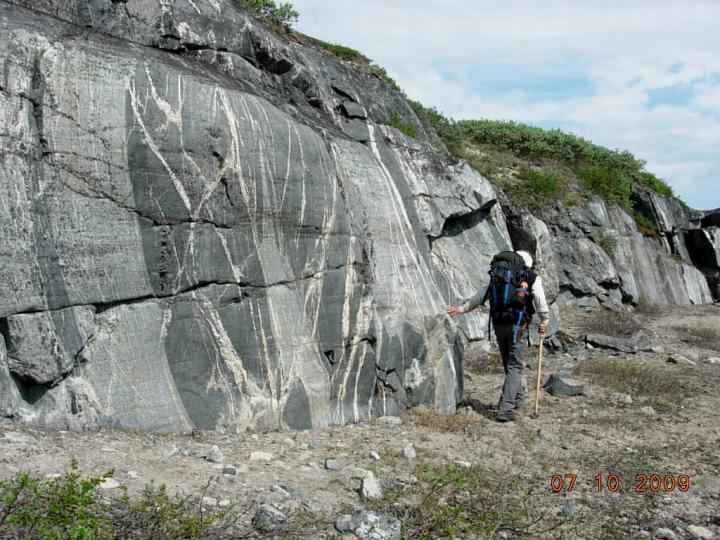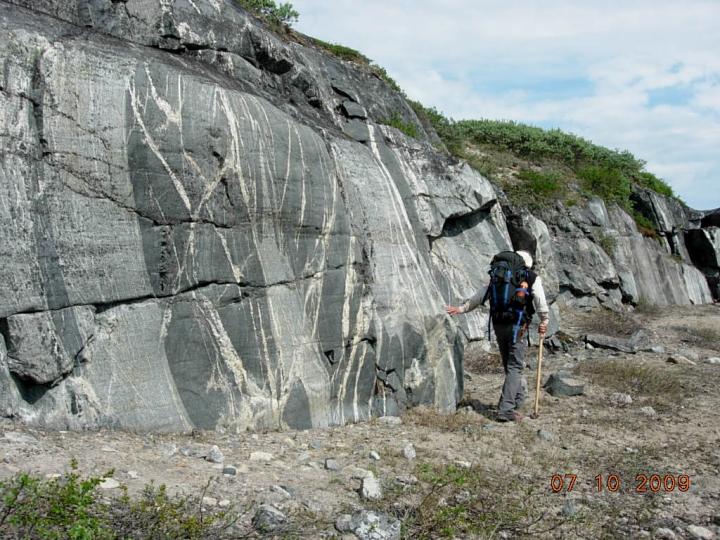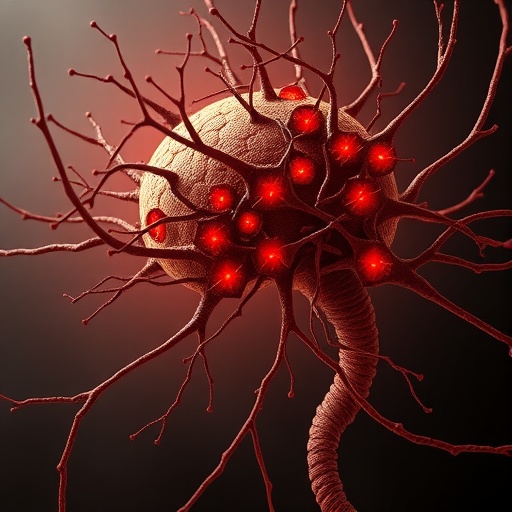
Credit: Photo by Rick Carlson.
Washington, DC–Rock samples from northeastern Canada retain chemical signals that help explain what Earth's crust was like more than 4 billion years ago, reveals new work from Carnegie's Richard Carlson and Jonathan O'Neil of the University of Ottawa. Their work is published by Science.
There is much about Earth's ancient crust that scientists don't understand. This is because most of the planet's original crust simply isn't around any longer to be studied directly–it has either sunk back into the planet's interior due to the action of plate tectonics or been transformed by geological activity at Earth's surface to make new, younger rocks.
"Finding remnants of this ancient crust has proven difficult, but a new approach offers the ability to detect the presence of truly ancient crust that has been reworked into 'merely' really old rocks," Carlson said.
The approach employed in this study examined variations in the abundance of an isotope of the element neodymium, which is created by the radioactive decay of a different element, samarium.
Isotopes are versions of an element that have the same number of protons, but different numbers of neutrons, causing each isotope to have a different mass. The isotope of samarium with a mass of 146 is unstable and decays to the isotope of neodymium with a mass of mass 142. (If you're interested in knowing how, it does this by emitting what's called an alpha particle–composed of two neutrons and two protons–from its nucleus.)
Samarium-146 is a radioactive isotope that has a half-life of only 103 million years. That may sound like a long time, but in geological terms it is really quite short. While samarium-146 was present when Earth formed, it became extinct very early in Earth's history. We know of its existence from the study of very ancient rocks, especially meteorites and samples from Mars and the Moon.
Variations in the relative abundance of neodymium-142 compared to other isotopes of neodymium that didn't originate from decaying samarium reflect chemical processes that changed the ratio of samarium to neodymium in the rock while samarium-146 was still present–basically before about 4 billion years ago.
Carlson and O'Neil studied 2.7 billion-year-old granitic rocks that make up a good portion of the eastern shore of Hudson Bay. The abundances of neodymium-142 in these granites indicates that they were derived from the re-melting of much older rocks–rocks that were more than 4.2 billion years old – and that these ancient rocks were compositionally similar to the abundant magnesium-rich rock type known as basalt, which makes up all of the present day oceanic crust as well as large volcanoes such as Hawaii and Iceland.
In more-recent times in Earth's history, basaltic oceanic crust survives at Earth's surface for less than 200 million years before it sinks back into Earth's interior due to the action of plate tectonics. The results presented in this paper, however, suggest that basaltic crust, which may have formed not long after Earth's formation, survived at Earth's surface for at least 1.5 billion years before later being re-melted into rocks that form a good portion of the northernmost Superior craton, a geological formation that extends roughly from the Hudson Bay in Quebec to Lake Huron in Ontario.
"Whether this result implies that plate tectonics was not at work during the earliest part of Earth history can now be investigated using our tool of studying neodymium-142 variation to track the role of truly ancient crust in building up younger, but still old, sections of Earth's continental crust," Carlson explained.
Their findings thus have important implications about the Earth's earliest crust and the processes that started the formation of Earth's continental crust.
###
Media Contact
Richard Carlson
[email protected]
202-478-8474
@carnegiescience
https://carnegiescience.edu/
############
Story Source: Materials provided by Scienmag





